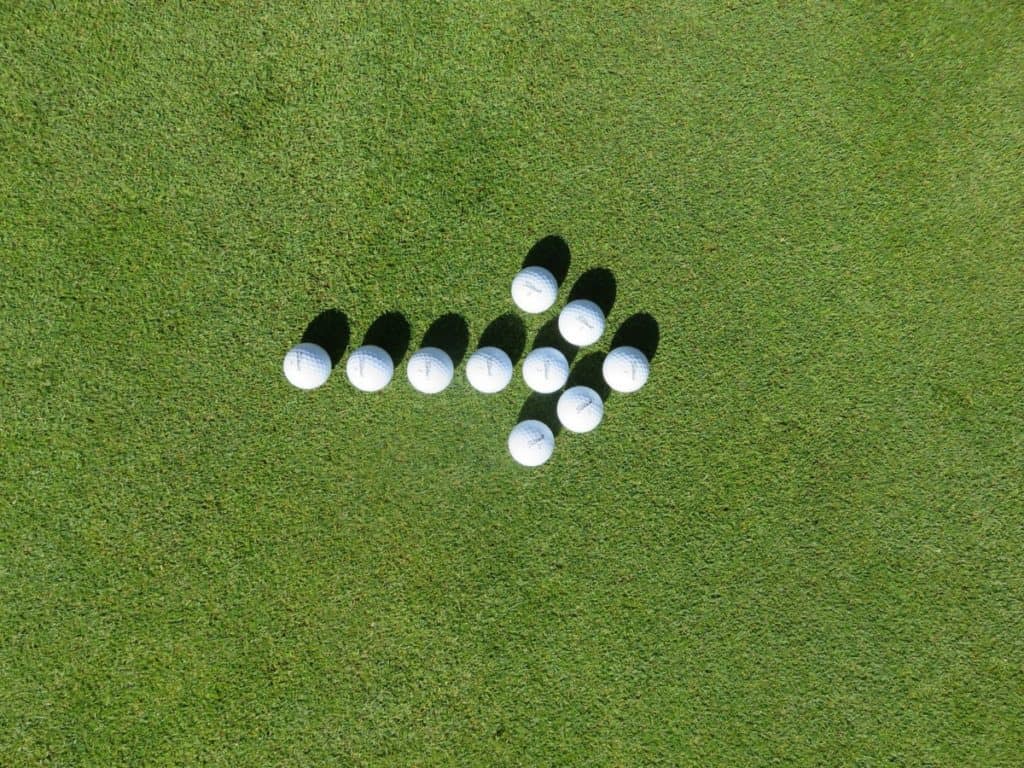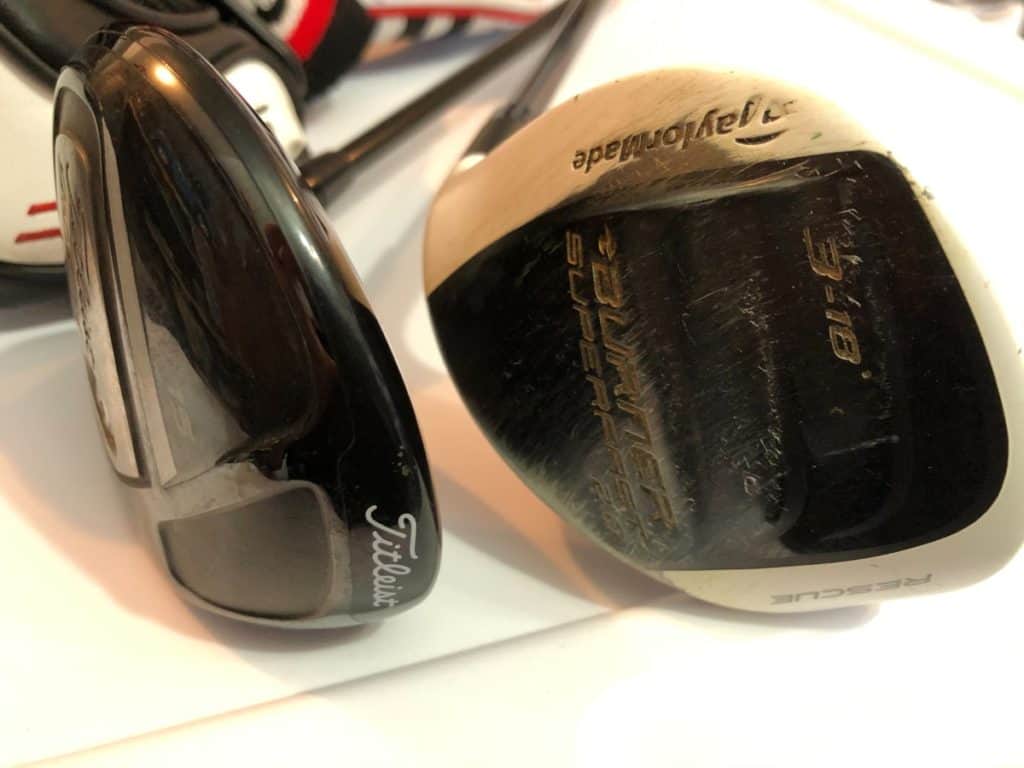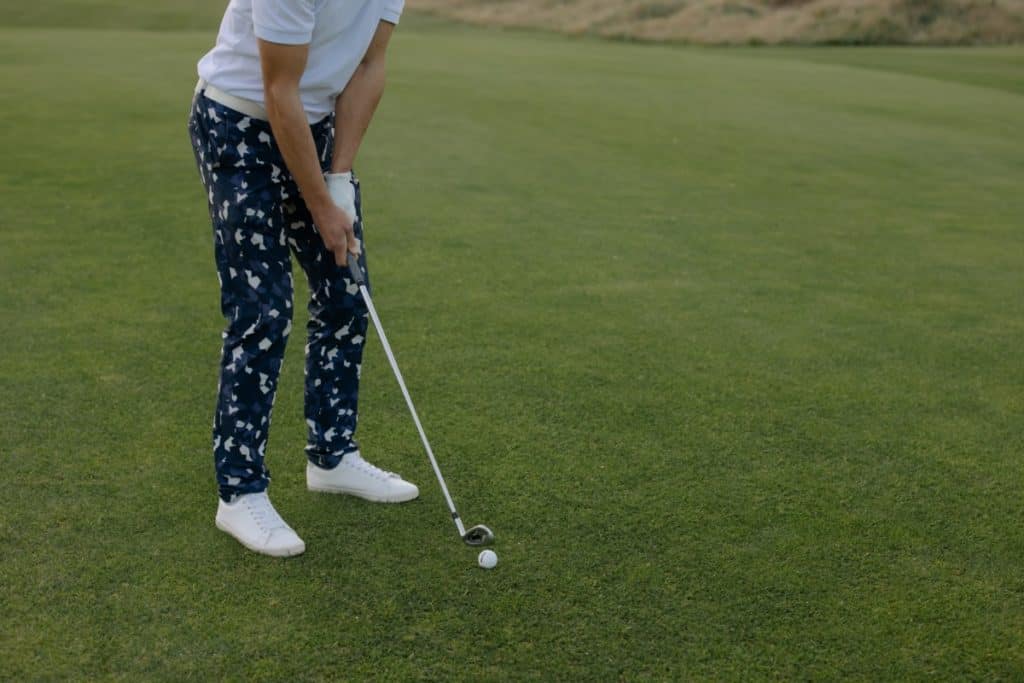
Getting back into golf after a long time away from it can be exciting and frustrating in equal measure. You remember where you used to be, but you aren’t there yet, and the equipment you used to use may need to be redone or replaced.
The good news is that the right clubs can significantly impact your game and truly take you to the next level.
The best golf clubs for getting back into golf have lots of forgiveness and flexibility. Flexibility helps to achieve speed, and forgiving clubs make it easier to hit the sweet spot and send the ball where you want it to go.
It might be tempting to invest in something flashy and streamlined, but if you are coming back to golf after a long time of not playing, you’re going to want something with plenty of forgiveness to help you get the distance you need.
From there, you can begin to rebuild your accuracy and control. The rest of this article will look at the different sets you may want to consider investing in to help you regain your old skill as you get back into golf.
Callaway 2019 Men’s Strata 12-Piece
Callaway has created a set that will take care of all your immediate needs when you are getting back out there for the first time.
They aim to give you extra distance off the tee with a lightweight driver with a titanium head.
The 3-wood here has an aerodynamic head shape, and both are designed with large sweet spots to make them easier to hit with and provide you with maximum distance in your long shots.
The putter and the 5 Hybrid included here are both created to be forgiving instruments, perfect for building back your confidence after a while out of the game.
The mallet putter’s alignment will help to improve your accuracy, while the stainless steel irons aim to hone your control while also retaining some of the forgiveness you are looking for as you improve your skill.
The whole set is lightweight and easy to carry around, but keep in mind that it only comes with 9 clubs.
For regaining your old skills and muscle memory, these 9 will provide all that you need, and you can think about adding more clubs to your bag once you have really mastered each shot.
Cleveland Golf Launcher Irons Set
Cleveland has been coming up with game-changing innovations for a while now, and these clubs are another excellent evolution in a technology we’ve seen do amazing things before.
This set makes use of a completely hollow construction to create a set of clubs that are actually pretty hard to get a mishit on. They are called Launchers for a good reason.
The more common cavity back irons are way less forgiving than these more progressive models, which achieve high-flying long distances with far less effort.
There have been incredible advances in the technology available to players in the last few years. Hybrid golf clubs have come to be preferred to long irons in many cases, and if you have never played with newer mode, you’re in for a treat.
The hybrid-like design on these improves the forgiveness on the long irons and makes it easy to hit in any situation, but they have gone for a more traditional iron-like feel on the short irons to emphasize your control.
You will notice that they have flat faces, instead of the rounded look of most irons, and the face is one of the secrets of their success.
The high strength Ht1770 steel face is very thin, increasing forgiveness because it allows for a greater distribution of weight to the club’s perimeter, reducing the distance you lose on mishits.
Simultaneously, the thin steel bends and flexes more on impact, which transfers momentum to the ball and further hits it.
If you’re willing to forgo a more classic aesthetic and go for something a little more unconventional, these forgiving and efficient clubs are an ideal way to ease yourself back into golf.
2018 Cobra King F8 Iron Set
If you’re getting back into golf with a mid to high handicap, these clubs are a great option for you.
Cobra aims this set at players with handicaps between 5-25, with a super forgiving low center of gravity on the clubs to help get the height into your shots.
There is a one-length variety available for this set, which has each club come in at the length of a 7 iron instead of variable lengths.
This may be a good choice for you if you’re on the lower end of the handicap spectrum and you are looking for simplicity in building your swing back up to what it used to be.
They have debuted ‘carbon feel technology’ in the irons, with a carbon fiber medallion underneath a carefully-designed face. The faces have varying thicknesses across them to maximize the sweet zone and increase the ball speeds.
The shorter irons have a u-shaped groove, and the long irons have a v-shaped groove, and this is to reduce spin and maximize distance on the long irons and, on the other hand, increase the spin; therefore, the control you can achieve on the shorter irons.
One optional benefit of these clubs is the Cobra Connect technology if you’re looking to train and track your journey back into golf.
You can be fitted to some or all of your clubs (for an extra cost) to give you information about your swing fed back to an app on your phone.
This is a cool feature that will help motivate you by giving you tangible evidence of your improvements.
Confidence Golf Men’s Power V3 Club Set and Stand Bag
A lesser-known but an excellent brand, these Confidence golf clubs are an affordable and worthwhile investment.
While the set features a well-made and versatile hybrid club, it uses this to replace its long irons.
This may not be a bad thing for you if you are just dipping your toe back in; the 24-degree loft hybrid club is easy to use and performs well, and it might suit your needs, to begin with, mastering the hybrid before reinvesting in those challenging long irons.
Especially if you haven’t played in years and haven’t experienced the new hybrid technology, you may be surprised by how much easier hybrids are to work with than the 1-2-3 irons.
The Titanium driver offers beautiful height on the drive, and the short irons have a slightly oversized sweet spot and a cavity-back structure to help you as much as possible.
The staffs are steel, which may not suit you if you are still working on your swing speed.
But if you are swinging at a reasonable speed, looking for something affordable to get you back into golf, and don’t mind the prospect of losing out on your long irons (or finding them independently) – this would be an excellent set for you.
Mizuno JPX 921 Hot Metal
Mizuno is known for its thin blades and pro-rated, low handicapper offerings, but they’ve created the most forgiving clubs in their collection with this set.
Unlike the rest of their clubs, which are forged, these ones are made of a Chromoly 414, lighter to help those who are still working on their swing speed.
The open back cavity is designed to give you easy height in your shots, and the toe bias in the weight distribution on the club means that off-center mishits have more stability.
For this model, they have added 3 sound ribs to the club, which channel the vibration of the ball’s impact to give a more solid feel through the club on the stroke.
This feature is more common on more advanced sets, but it’s a good idea to have a responsive set of clubs that have a great feel as you are getting into golf again: the sensitivity will help you pick up differences in your swing.
Wilson Men’s Complete Set
The oversized composite driver is made of forged titanium, and the weight distribution on it means that it has a huge sweet spot due.
In contrast, the unique design of the head of the driver is created to give you stability on off-center hits, improving the launch when the clubface makes contact with the ball.
This straightens the ball’s flight path, which in turn creates greater distance in the shot.
They also feature a distance-oriented head design on the irons for a straighter, cleaner, and more efficient shots.
Much of this is due to the low center of gravity on these clubs, with weight centered on the soles. This makes launching the ball into the air easier and the overall shots more forgiving.
The shaft is graphite, which is more flexible than iron. This is a solid choice for building your golf game back up because the flex will increase your swing speed and help you get the ball farther.
This particular set has a reinforced tip to stabilize the head, allowing for a cleaner launch.
The putter in this set is designed for stability, with an alignment system to easily increase your accuracy on the green.
Pinemeadow Men’s PGX Golf Set
This is a stripped-down set that is great for someone starting out or if you already have some aspects of your set, perhaps from previous golfing days.
As with all of the clubs on this list, these emphasize improving your game, with a forgiving driver that features a large sweet spot.
These clubs are designed to give you great altitude and get the ball angle high for a great landing. The irons give you a great launch and good levels of spin with their oversized soles.
One great characteristic of this set is that the driver, fairway wood, and hybrid have a white finish for high visibility as you set up.
Keep in mind that this set is not comprehensive: they don’t include a bag, a putter, or a sand wedge.
If you still have the bag you used when you first started out golfing, this won’t be a problem, and you may be able to get the handles changed on your old putter and sand wedge to complete this set.
If not, you can build up the set by buying individual pieces. Regardless, this set offers good value for rebuilding your golf game.
Wilson Staff Golf Men’s D7 Irons
This set of cubs is designed for players who are looking to improve their distance on the course.
The long irons have three rows of what Wilson calls ‘Progressive Power Holes’, which allow for a long, straight flight.
Their shorter irons are created for feel and precision, so they are heavier and have fewer holes, which should help your control.
The thin face also improves the distance and feel of each of the clubs. Expect a heavy, low center of gravity for a very forgiving driver, with a flexible graphite shaft for improved speed on the swing.
These clubs won the 2019 Golf Digest Hotlist Gold placement for best game-improvement clubs, so they are very worth considering as an investment in your game.
2020 TaylorMade SIM Max Iron Set
These SIM Max clubs are made of graphite, with TaylorMade’s ECHO Damping system covering the face of the club to channel the energy of the swing in order to cut down on the vibrations that make the impact uncomfortable.
So in many ways, these clubs feel like forged steel, but with the flexibility of graphite.
The face here is 17% thinner than their previous iteration to create the maximum speed on the ball, and the ‘Thru-Slot Speed Pocket’ is a cool innovation whereby the face is disconnected from the sole and moves freely. This also works to give speed and, therefore, distance to your ball.
One of the ways they build forgiveness into this model is through the ‘Speed Bridge’ technology, which brings stability to the irons by supporting the topline and strategically thickening it in places.
Ultimately, this works with the other more flexible elements of the clubs to give you greater distance, even on mis-hits.
2020 XXIO Eleven Iron Set
There are many aspects of the game that your club choice affects, and many of the sets on this list are oriented towards improving your distance and forgiving your mis-hits.
This is important, but if you’re looking specifically to improve your consistency, the XXIO 2020 irons may be your best bet.
They’ve reduced the club’s weight and replaced it with their ‘WEIGHT PLUS’ weights, made of brass and rubber.
These sit in each club’s butt-end for a weight distribution that results in a counterbalance to the grip end. Having it closer to the hands makes it easier for players with a moderate swing speed to control, resulting in a smoother, more consistent swing.
They have increased the irons’ flexibility by cutting two slots into the body just behind the face. This double undercut back cavity increases the speed and the distance you can achieve.
While this does make the clubs more forgiving, the design’s primary emphasis is for players looking to grow in their shots’ reliability.
This could be what you exactly need as you re-enter the world of golf: you may still know enough to make the occasional stellar shot, but true mastery only comes when you can do it over and over again.
Which Is Right For You?
Overall, the Cleveland Golf Launcher Irons may be the best option to get back into golf. The incredible forgiveness of these irons pairs with the control offered by their unique shape, and if you haven’t played for a few years, you’ll enjoy experiencing the innovation and advances that have gone into creating these clubs.
If you already have some clubs that you like and feel confident with but are looking to build up your collection to a full set, Pinemeadow Men’s PGX Golf Set could be the most cost-effective kickstart to your golf game. They are better suited for taller players, however, so keep that in mind as you browse.
Alternatively, if it’s a more affordable and comprehensive option you’re looking for, the Confidence Golf Men’s Power V3 is an excellent decision. These clubs will allow you to build up your skill, and by the time you outgrow them, you’ll have a real idea of what specific features you want to be emphasized in your next set.
Final Thoughts
As you can see, there are many excellent options for you to consider as you dive back into golf. Whether you’re looking to buy a few crucial irons like the XXIO Irons Set or a full line-up of new equipment like the Wilson’s Men’s Complete Set, you will find clubs to take you to the next level.
So now, it’s time to make a note of a few models you’re intrigued by and get into a shop to try out the feel of the clubs themselves! No amount of theory can replace getting a feel for the clubs’ weight and feel in person. Check these out and get back onto the course!
Sources
- The Left Rough: Getting Back Into Golf
- The Left Rough: Mizuno JPX 919 Hot Metal Irons Review
- Mizuno Golf: JPX921 Hot Metal
- Golf Digest: TaylorMade’s SIM Max
- Golf Digest: XXIO lineup
- Golf Influence: Best Golf Clubs for Beginners
- Golf Sidekick: Most Forgiving Irons
- Golf Sidekick: Best Hybrids
- Reddit: Getting back into golf
- The Golf News Net: Clubs for Beginners
- Golf: Iron vs. Steel Graphite
- LiveAbout: Forgiveness
- Golf Digest: Tour Edge Exotics
- Visoto Golf: Confidence Review
- Golf Digest: Hotlist of Super-game Improvement Irons











































